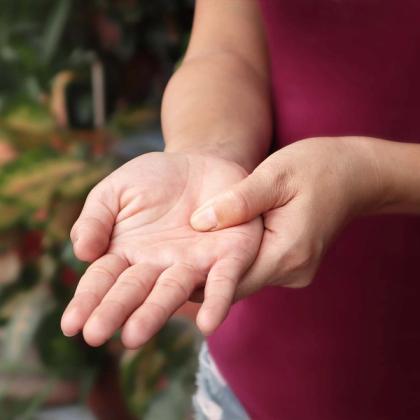This podcast episode is worth 0.29 CPD credits. Upgrade to Pro
Paraesthesia is an indication of an abnormality that impacts the sensory pathways at any point from the peripheral sensory nervous system right up to the sensory cortex. The essential tool for the diagnosis of this condition is obtaining a concise patient history. This history must accurately reflect the patient's experience, including the provoking and alleviating factors, along with any existing concurrent conditions, such as diabetes and all treatments that might potentially lead to neuropathies. Treatment is based on the relevant diagnosis and mechanism to address the cause. In this episode, Dr Roger Henderson discusses paraesthesia, covering its causes, investigations and treatment.
Key take-home points
- Paraesthesia is usually defined as an abnormal sensation perceived on the skin or mucous membranes, but without any external stimulus.
- These sensations are often described by patients as tingling, prickling, pins and needles, burning, crawling, buzzing or even a subtle form of numbness.
- They can be temporary or enduring, presenting as localised or generalised and are capable of involving any area of the body that is supplied by sensory or afferent neural fibres.
- Paraesthesia may result from a dysfunction or irregularity at any point along the somatosensory pathway. The issues most frequently responsible involve the peripheral sensory nerves.
- A knowledge of the anatomy of the somatosensory pathways is helpful to understand the patterns of paraesthesia produced by different processes.
- Focal nerve entrapment syndromes can lead to paraesthesia in the distribution of the involved peripheral nerve if sensory nerve fibres are involved. Sensory symptoms usually appear first, followed by motor weakness in the distribution of the affected nerve. Symptoms typically follow the pattern of the distribution of the nerve distal to the site of compression or entrapment.
- Paraesthesia due to diabetic neuropathy, hypocalcaemia, vitamin deficiencies, drug toxicity and infections such as shingles or herpes simplex virus can usually be diagnosed clinically or with laboratory testing. All other peripheral neuropathies may require electromyography with nerve conduction studies to confirm and characterise the neuropathy.
- Localised symptoms indicate a peripheral mononeuropathy or a plexopathy if in the distribution of one or more peripheral nerves, or a radiculopathy if in the distribution of a dermatome.
- Generalised unilateral symptoms involving the face or extremities suggest spinal cord or brain pathology. Muscle pain, atrophy, or weakness in the same anatomical distribution as the paraesthesia may also suggest involvement of a spinal nerve root, spinal cord, or brain.
- Patients with anxiety disorders, depression or somatoform disorders may report extensive paraesthesia symptoms that defy neuroanatomical logic.
- The treatment of paraesthesia depends on addressing the underlying cause.
- In diabetic neuropathy, strict glycaemic control is crucial, although symptomatic relief may require pharmacologic agents such as gabapentin, pregabalin, duloxetine or tricyclic antidepressants.
- In cases of vitamin deficiency, replacement therapy can fortunately lead to rapid and often complete resolution of symptoms if initiated early.
- Entrapment neuropathies may respond to conservative measures such as splinting and physical therapy, though surgical decompression may be indicated in severe or refractory cases.
- Autoimmune neuropathies may require corticosteroids, intravenous immunoglobulin or plasma exchange, depending on the severity and chronicity of the disease.
- Symptom control in patients with chronic, irreversible neuropathies usually requires a multimodal approach, combining medications for neuropathic pain, physical rehabilitation, occupational therapy and psychological support.
Key references
- Beran R. Aust Fam Physician. 2015;44(3):92-95.
- England JD, et al. Neurology. 2014;82(19):1745-1748. doi: 10.1212/WNL.0000000000000397.
- Hammi C, Yeung B. StatPearls [internet]. 2022. https://www.ncbi.nlm.nih.gov/books/NBK542220/.
- Castelli G, et al. Am Fam Physician. 2020 Dec;102(12):732-739.
- Watson JC, Dyck PJB. Mayo Clin Proc. 2015;90(7):940-951. doi: 10.1016/j.mayocp.2015.05.004.
Create an account to add page annotations
Annotations allow you to add information to this page that would be handy to have on hand during a consultation. E.g. a website or number. This information will always show when you visit this page.
